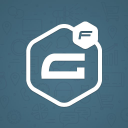I Grew My One-Man Marketing Tool To $1M ARR [Update]
This is a follow up story for Attributer . If you're interested in reading how they got started, published over 3 years ago, check it out here.
Hello again! Remind us who you are and what business you started.
Hey again! My name is Aaron and I built Attributer.
Attributer is a simple tool for getting marketing attribution data (like the fact a lead came from Organic Search, Paid Search, Organic Social, etc.) into your CRM so that you can run reports that show you where your leads & customers are coming from.
We’re at approximately $1 million in ARR and are completely bootstrapped, and I am the only employee.

Tell us about what you’ve been up to. Has the business been growing?
My last StarterStory interview was just over 2 years ago and we’ve grown a bit since then. We were at $60k ARR then, and now we’re over $1 million now, so I guess we’ve 10x...

Download the report and join our email newsletter packed with business ideas and money-making opportunities, backed by real-life case studies.

Download the report and join our email newsletter packed with business ideas and money-making opportunities, backed by real-life case studies.

Download the report and join our email newsletter packed with business ideas and money-making opportunities, backed by real-life case studies.

Download the report and join our email newsletter packed with business ideas and money-making opportunities, backed by real-life case studies.

Download the report and join our email newsletter packed with business ideas and money-making opportunities, backed by real-life case studies.

Download the report and join our email newsletter packed with business ideas and money-making opportunities, backed by real-life case studies.

Download the report and join our email newsletter packed with business ideas and money-making opportunities, backed by real-life case studies.

Download the report and join our email newsletter packed with business ideas and money-making opportunities, backed by real-life case studies.



























